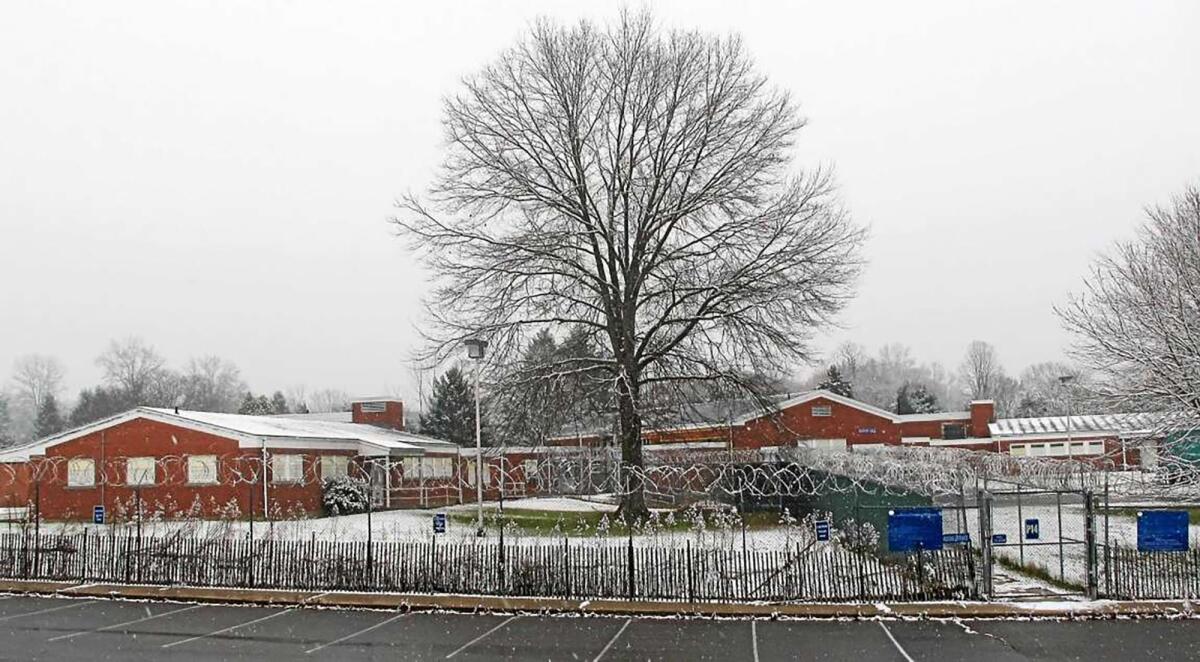Op-Ed: What to do with California’s recently closed prisons

- Share via
California has a historic opportunity to transform its carceral landscape.
A recent downward trend in prison populations brought about by decades of criminal justice reform has created a growing inventory of empty prisons as the Newsom administration tries to “right-size” the state’s sprawling system of human caging.
Early this month, state officials announced the forthcoming closure of Chuckawalla Valley State Prison in Riverside County — the third such announcement in two years, with the possibility of more to come. So, what’s to be done with a closed prison? It’s an important question, one that California leaders have been slow to answer.
In a national study published in August, the Sentencing Project found that 21 states had partially or fully closed at least one correctional facility since 2000, leaving many closed sites prime candidates for community and commercial use. If California wants to become a national leader on prison closure, there’s a lot to learn from other states.
Private developers in New York recently converted two closed prisons into a movie studio and office buildings. The state’s Empire State Development Corp. has committed to several initiatives for communities where prisons close, including plans to provide new job opportunities for former correctional staff. This year, New York Gov. Kathy Hochul established the Prison Redevelopment Commission to guide efforts to reuse state prison facilities and to revitalize communities. Since 2013, millions in funding has been appropriated to support 25 prison facility redevelopment projects.
Officials in rural Tennessee repurposed a maximum-security prison into a whiskey distillery and campgrounds.
Nonprofit stakeholders in Texas are planning to repurpose a state prison into community meeting space, and there are plans to reimagine the decommissioned Dawson State Jail to anchor development in Trinity Park, a central hub in Dallas for hiking, fishing and family playgrounds.
In Virginia, the redevelopment of the maximum-security Lorton Reformatory includes the Workhouse Arts Center and several buildings transformed into galleries and artists’ studios.
In Michigan, officials are planning to reuse a minimum-security prison as a business park.
There’s no shortage of inspiration for California. The Newsom administration should be actively promoting prison-replacing initiatives for communities to consider.
Projects like these should be the norm. Without community outreach and state planning to repurpose decommissioned prisons, there’s a looming risk that they will be reactivated for incarceration.
For now, closed California prisons are being kept in “warm shutdown” mode, in which staff and funding are allocated for maintenance of basic facility operations. The California Department of Corrections and Rehabilitation operates seven closed facilities in warm shutdown mode, costing millions. For instance, keeping Deuel Vocational Institute — the prison near Modesto that Gov. Gavin Newsom closed in 2021 — in warm shutdown will cost taxpayers $2.2 million per year, indefinitely.
California is facing a looming $24-billion deficit and opponents of prison closure aren’t doing the math. The state’s own nonpartisan Legislative Analyst’s Office calculates California would save $1.5 billion every year if we closed five state prisons by 2025. Community organizers Californians United for a Responsible Budget estimates that billions more could be saved by canceling wasteful prison infrastructure and maintenance projects.
The federal government can help too. The U.S. Department of Agriculture finances rural development projects through the Community Facilities Direct Loan and Grant Program. Any locality (including federally recognized tribal lands) that meets certain population requirements qualifies. Thus far, this fund has been woefully misused to help finance local jail construction. Instead, we should activate these resources to support things that we know keep people safe, like health clinics, community centers and food pantries.
Strengthening communities is a profound investment in public safety. Communities that we think of as safe are not those with the most police and the most people going to prison, but rather those with enough resources to provide support to residents and their families. Reimagining old prisons as hubs for prosperity will empower people across California to imagine a brighter and more sustainable future.
Amber-Rose Howard is the executive director of Californians United for a Responsible Budget, and Nicole D. Porter is senior director of advocacy at the Sentencing Project.
More to Read
A cure for the common opinion
Get thought-provoking perspectives with our weekly newsletter.
You may occasionally receive promotional content from the Los Angeles Times.










